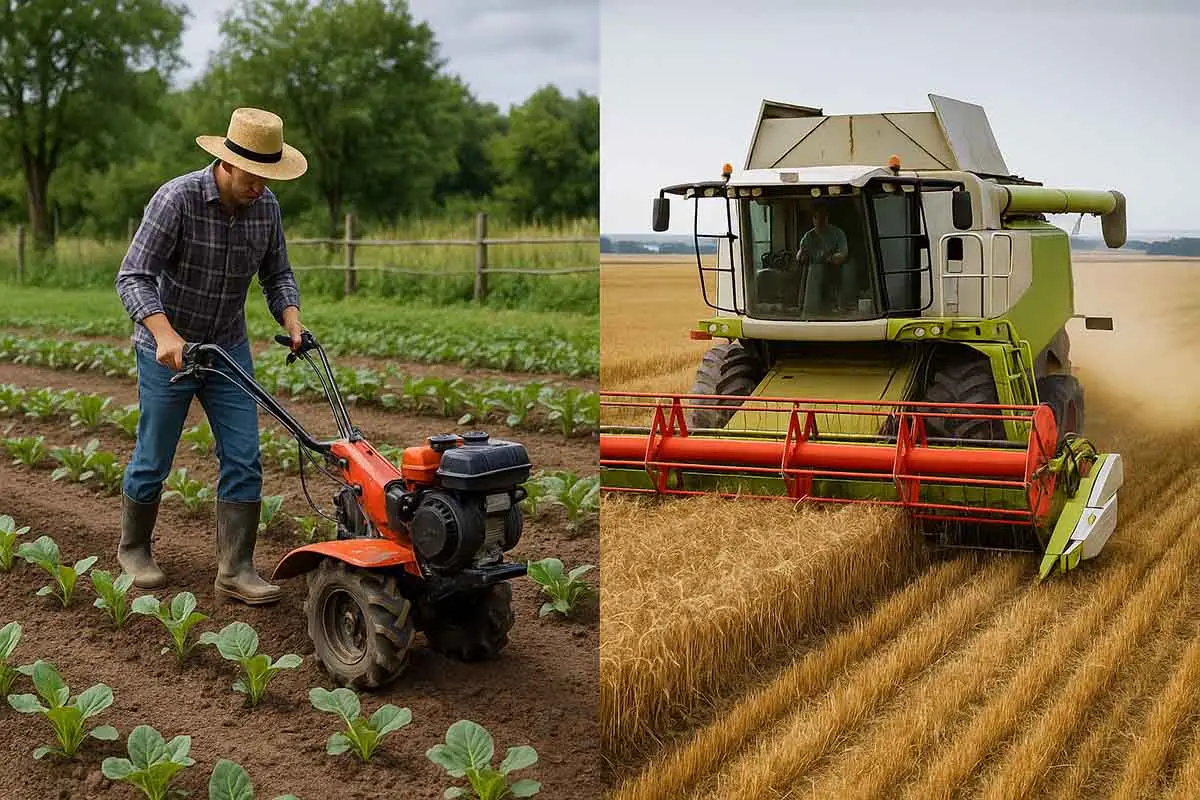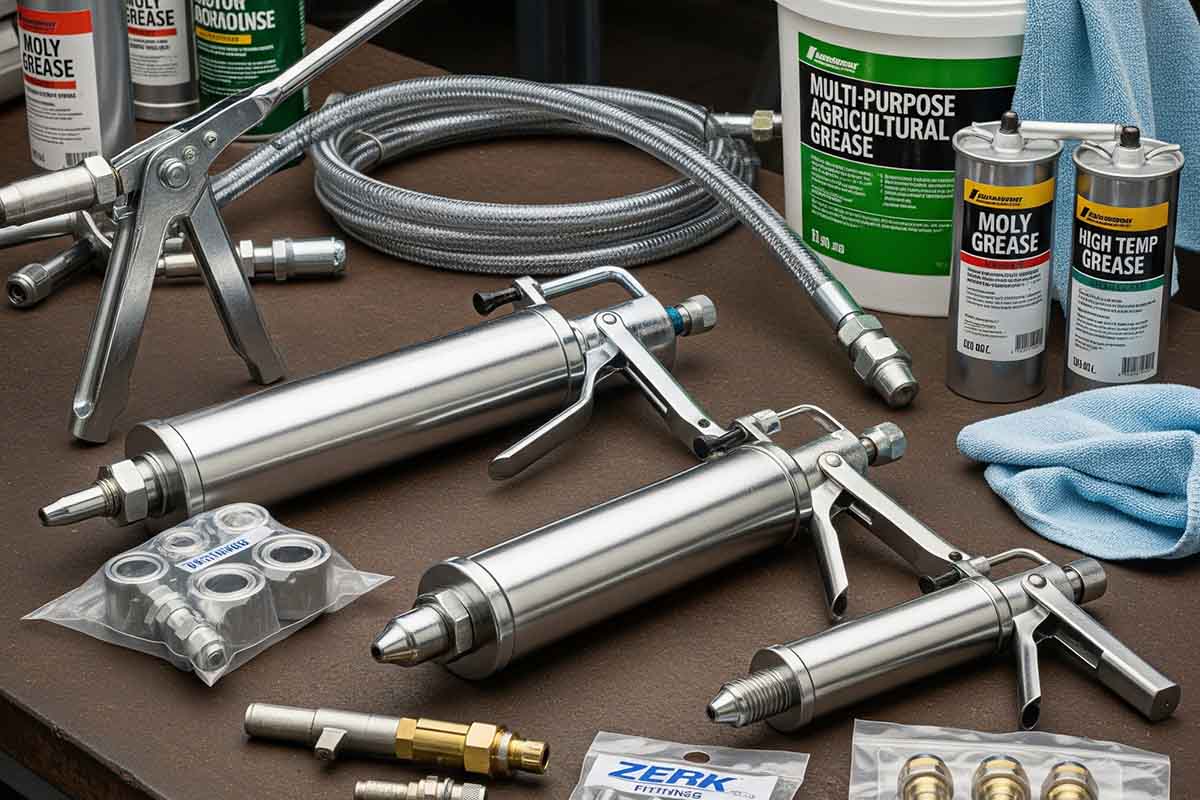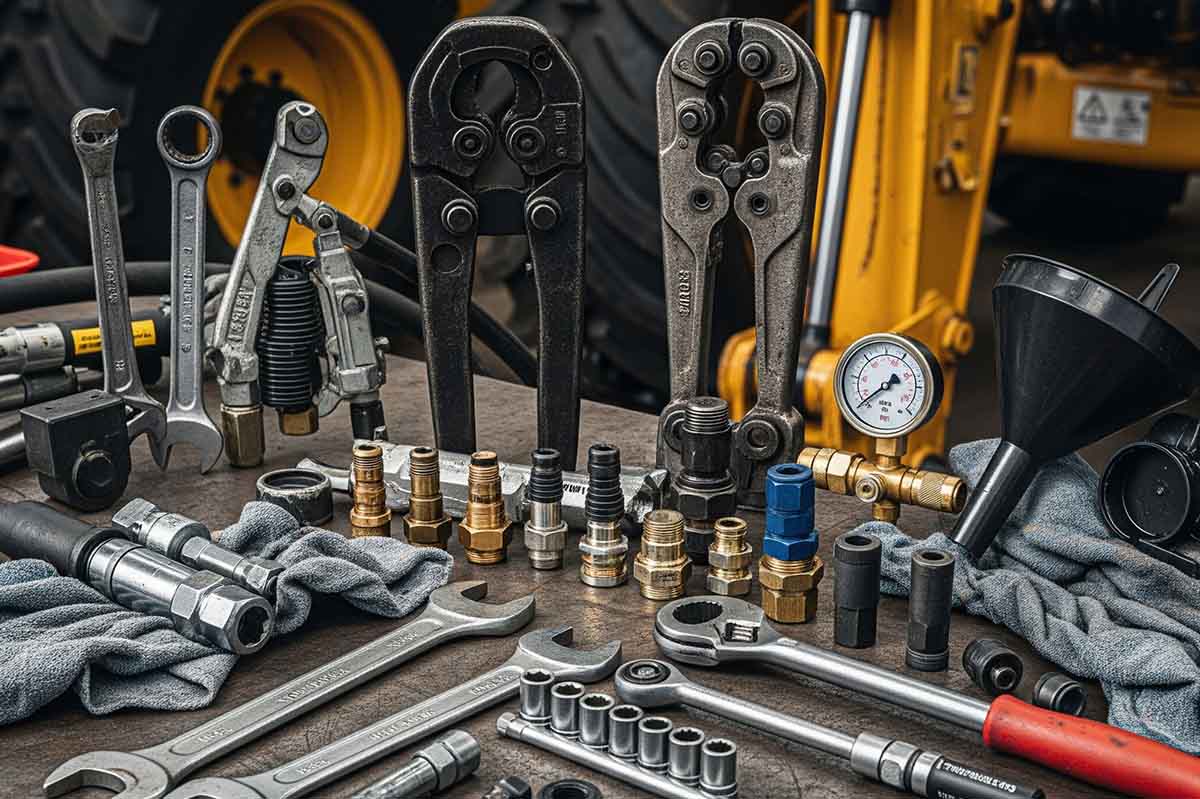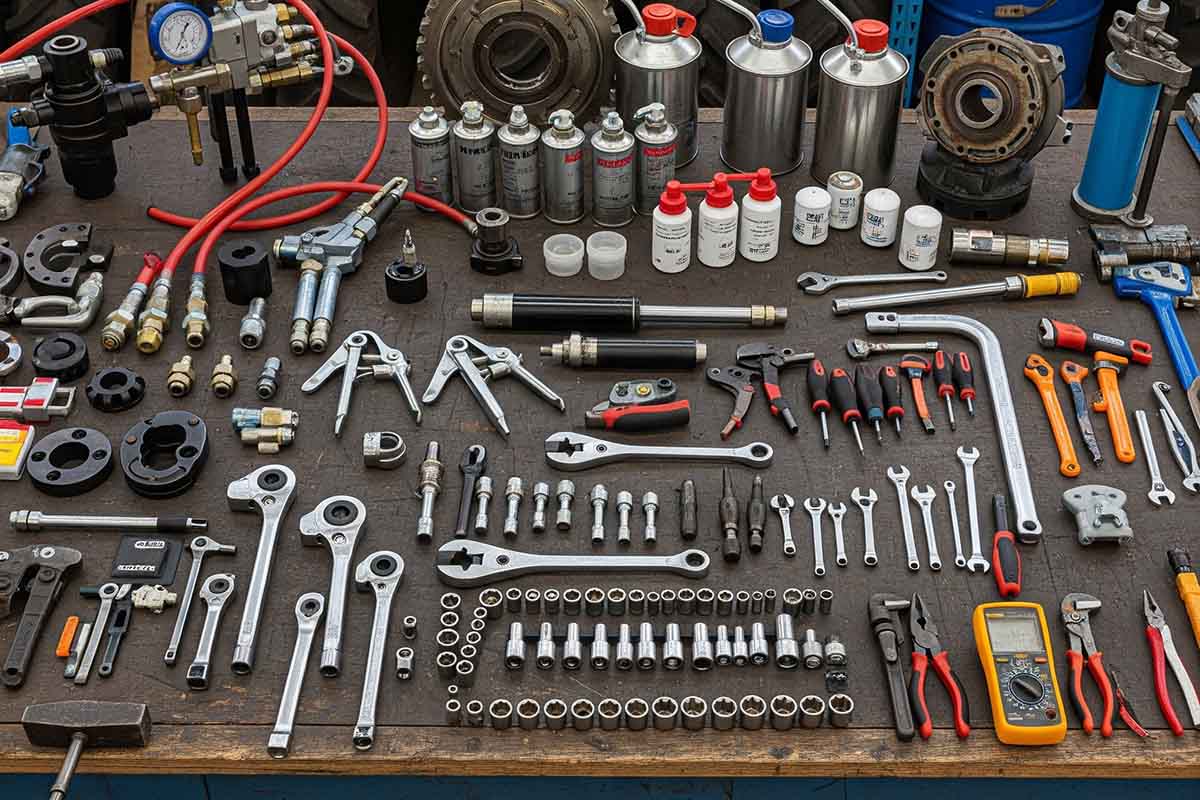Introduction – Why This Comparison Matters
In agriculture, one size definitely doesn’t fit all—especially when it comes to farm tools. A small-scale vegetable grower and a 5,000-hectare grain producer face entirely different challenges. Yet, both rely on tools to improve efficiency, reduce labor, and increase yield.
This article looks at real-world case studies of small and large-scale farm tool usage, revealing what works, what doesn’t, and the surprising lessons each can learn from the other.
1. Small-Scale Farms: Tools for Precision and Flexibility
Case Study – Organic Vegetable Farm (8 hectares)
Located in southern Spain, this family-run organic farm uses walk-behind tractors, drip irrigation systems, and small mechanical transplanters.
- Main Goal: Reduce labor costs while preserving soil health.
- Key Tools:
- Walk-behind tractor with multi-attachment system
- Portable seeders
- Hand-held harvest knives and battery-powered pruners
- Small-scale cold storage units
Results:
- Labor Reduction: 30% compared to manual-only operations
- ROI: Payback on small tractor investment within 18 months
- Challenges: Scaling up is slow; tools are great for niche crops but less efficient for bulk production.
2. Large-Scale Farms: Tools for Speed and Volume
Case Study – Wheat & Corn Producer (4,200 hectares)
Based in the US Midwest, this farm uses GPS-guided combine harvesters, large planters, and automated grain handling systems.
- Main Goal: Maximize yield per hectare with minimal downtime.
- Key Tools:
- 12-row precision planter with variable rate seeding
- Combine harvesters with 40-foot headers
- Automated grain dryers and conveyors
- Drones for crop monitoring
Results:
- Harvest Speed: 200+ hectares per day during peak season
- Cost Efficiency: Reduced overlap by 15% with GPS systems
- Challenges: High upfront investment, expensive maintenance, and dependency on specialized technicians.
3. Key Differences in Tool Usage
| Aspect | Small-Scale Farms | Large-Scale Farms |
|---|---|---|
| Initial Cost | Low to moderate | Very high |
| Maintenance | Simple, DIY-friendly | Requires trained techs |
| Flexibility | High – tools adapt to many crops | Low – tools optimized for specific crops |
| Labor Needs | Moderate | Low per hectare |
| Scalability | Limited | Excellent |
| Tech Integration | Minimal | High (GPS, AI, IoT) |
4. Cross-Learning Opportunities
- Small-scale farms could adopt affordable GPS tools and mobile-based crop monitoring to improve efficiency.
- Large-scale farms could learn from small-scale flexibility by integrating modular equipment for trial crops.
Interesting Fact:
Some Japanese micro-farms use robotics originally designed for large farms but scaled down—resulting in 40% labor savings even on small plots.
Lesser-Known Fact:
In South America, cooperative equipment sharing programs allow small farmers to access large-scale machinery for just a few days per year—at a fraction of the purchase price.
5. Pros & Cons by Scale
Small-Scale Pros:
- Low investment risk
- Easier to adapt to market changes
- Lower debt exposure
Small-Scale Cons:
- Limited production capacity
- Labor-intensive without mechanization
- Slower scaling
Large-Scale Pros:
- High production efficiency
- Better market competitiveness in bulk sales
- Strong tech adoption potential
Large-Scale Cons:
- High financial risk
- Maintenance complexity
- Vulnerability to tech failures
Small vs Large-Scale Farm Tools FAQ
Conclusion – Different Sizes, Same Goal
Whether farming 5 hectares or 5,000, the right tools amplify efficiency and profitability. Small farms thrive on adaptability, while large farms dominate in volume and speed. The best strategy is often a hybrid approach—blending scalable tech with flexibility to adapt to changing markets and climates.
Further Read
- Industrial Tools in Agriculture – Powering Farming
- Overview of industrial tools for planting and harvesting
- Small vs Large-Scale Farm Tools: Real-World Case Studies
- Role of Mechanization in Sustainable Agriculture
- Top Agricultural Tool Brands You Should Know
- Emerging trends: automation, AI, and robotics in farming
- Top Industrial Tools Transforming Modern Agriculture
- Essential Maintenance Practices and Tools for Agricultural Machinery: Your Complete Guide
- IoT-Enabled Agricultural Tools
- Drones in agriculture: surveying, planting, and spraying
- Precision farming tools: GPS-guided equipment for planting and harvesting
- Data-driven decision-making in agriculture
- Top 10 Maintenance Tools for Tractors, Harvesters & Irrigation Systems
- Seasonal Maintenance Checklists & Toolkits for Farmers
- Hydraulic System Maintenance Tools for Heavy Farm Equipment
- Lubrication Tools and Best Practices for Agricultural Machinery
- Industrial Torque Wrenches: Key to Farm Equipment Safety
💬 Your Turn: Are you farming small-scale, large-scale, or somewhere in between? Share your tool experiences in the comments and spread this article with fellow farmers and agri-enthusiasts!





